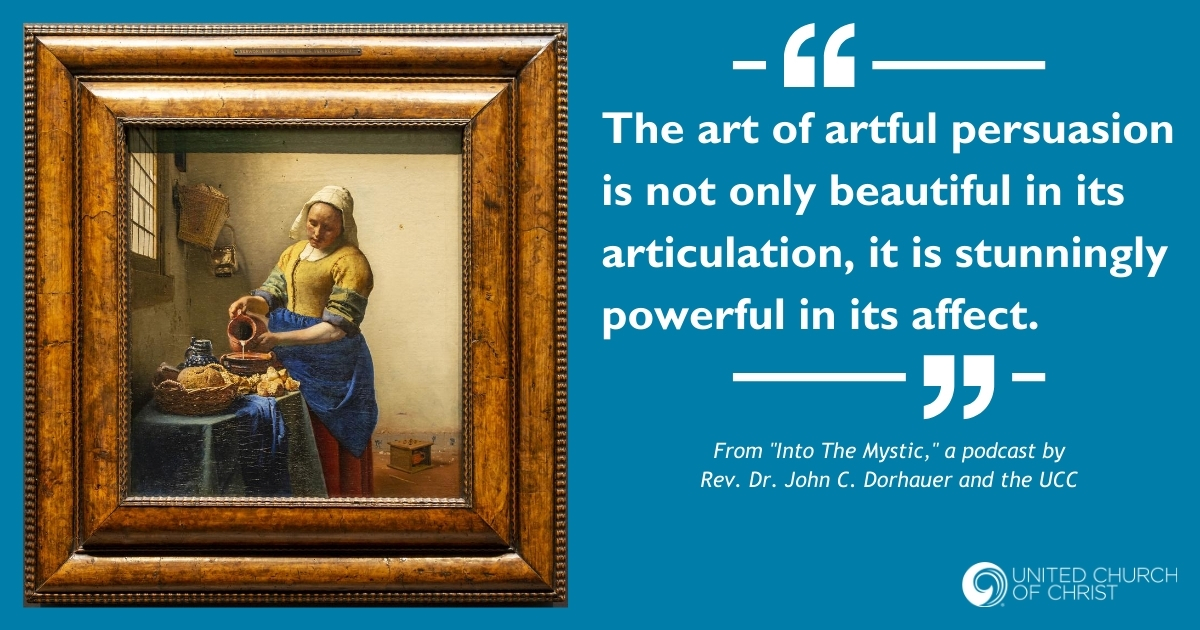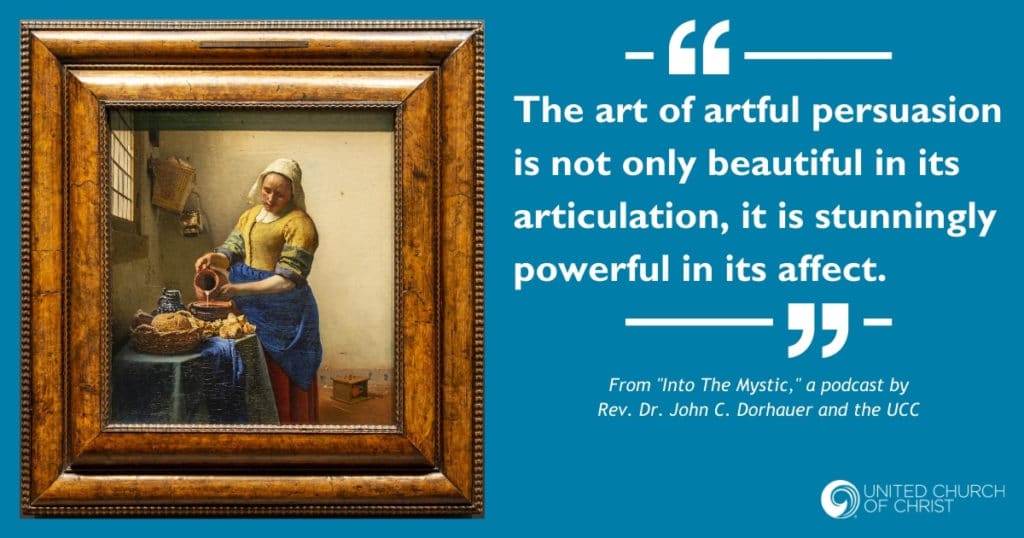Into the Mystic: Art as God’s Handiwork
 When the Holy Spirit touches our artful passions, beauty is the outcome for the rest of us to enjoy and experience.
When the Holy Spirit touches our artful passions, beauty is the outcome for the rest of us to enjoy and experience.
A few years ago, I was in Chicago by myself on a business trip. I had an afternoon free and went to the art museum.
While there, a painting by Vermeer hung in a room by itself. I like Vermeer, and so I went to see it. I love good art – but this painting mesmerized me. It was of a young maiden, standing by a window with the light streaming in while she did some mundane task. I couldn’t look away.
Eventually, I left and wandered around the museum. But I could let the feeling go that this painting instilled within me, so I went back to see it again. Three times I went back to see it again. I had to finally tell myself I had to leave, knowing with a bit of lingering disappointment I would never see it again. Now, I cherish the memory of it.
What is it that artists do that capture our attention like that? Without knowing it, art sneaks up on us. It takes us by surprise – and not with the sudden, almost violent interruption of expectations like my wife did on my 40th birthday (well, to be honest, I did it to her first on her 40th – so I should have seen that one coming).
No, art is far too subtle to be the sudden surprise. It is often the gentle Aha! that dawns on us before we are aware that we have been altered. Something we saw before or knew before or believed before shifts when art and artist conspire to speak a new reality.
Poets do this. Think ‘I know why the caged bird sings….”
Sculptors do this. Think of Michelangelo’s Pieta, another piece of art that stole my breath and took my tears.
Songwriters do this. Think “Come mothers and fathers throughout the land and don’t criticize what you can’t understand your sons and your daughters are beyond your command, for the times they are a changin’”.
Painters do this. Think “The Third of May 1808” by Goya. If you don’t know this one, please google it.
Good rhetotrc can do this. Think “I have a dream….”
So many with creative and intuitive powers not only see the danger inherent in some of our assumptions, they see a new and better way to be good in the world. Rather than confront the resistance directly, true artists do what poet Emily Dickinson offered as a different and more effective pathway to persuasion: “Tell the truth,” she wrote, “but tell it slant.”
The art of artful persuasion is not only beautiful in its articulation, it is stunningly powerful in its affect.
Good worship will always make use of good art.
Hymns and sermons, iconography and statuary, architecture and liturgy can all be crafted with artistic hands to surprise the worshiper with an authentic encounter with the sacred.
The first time I sang the song “Bring Many Names,” I wept. The discovery of a God who loves all melted me that day.
I remember hearing Bach’s “Jesu, Joy of Man’s Desiring” as my bride to be walked down the center aisle. My heart skipped a few beats.
I remember the sanctuary in which I saw the first painting of a black Jesus.
I enter the humble and the ornate sanctuary, each shaped with the eye of a visionary who knew God would be encountered in the light and shadow – and I am moved.
I give God thanks for the art and the artist. I am profoundly grateful for those whose calling is to reshape our pathways in life with the art they create. May their handiwork continue to move us as walk we our way through the world on this, our journey Into the Mystic.
Related News
An ally experiences PRIDE in the CLE
Advocacy and Action for Women's and Gender Justice Local events stir thoughts and...
Read MoreUCC Releases Menstrual Health Toolkit
Advocacy and Action for Menstrual Health and Justice Work with partners Church World Service...
Read MoreUCC Presence at United Nations
Advocacy at Commission on Status of Women United Nations’ Commission on the Status of Women...
Read More
